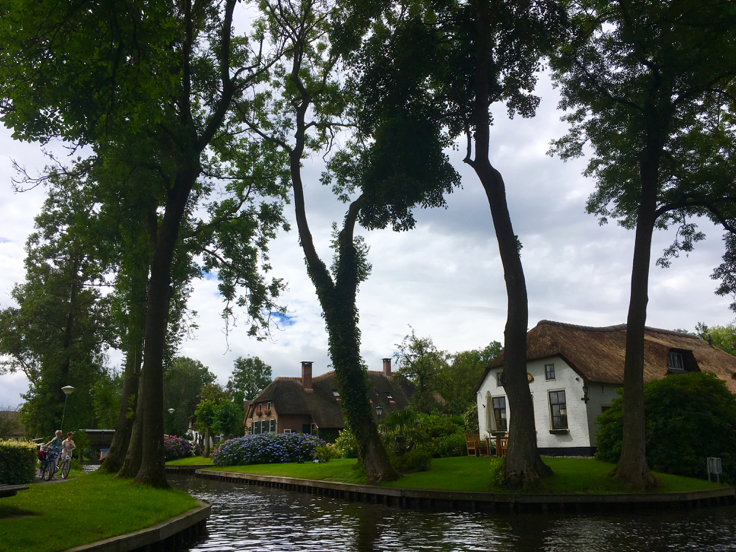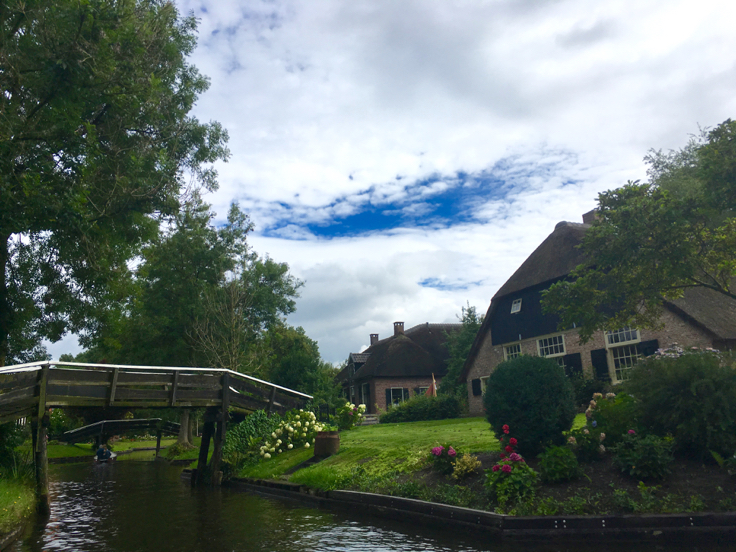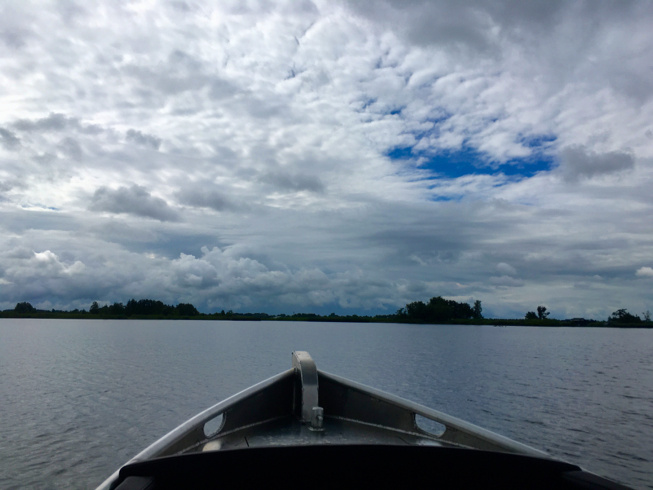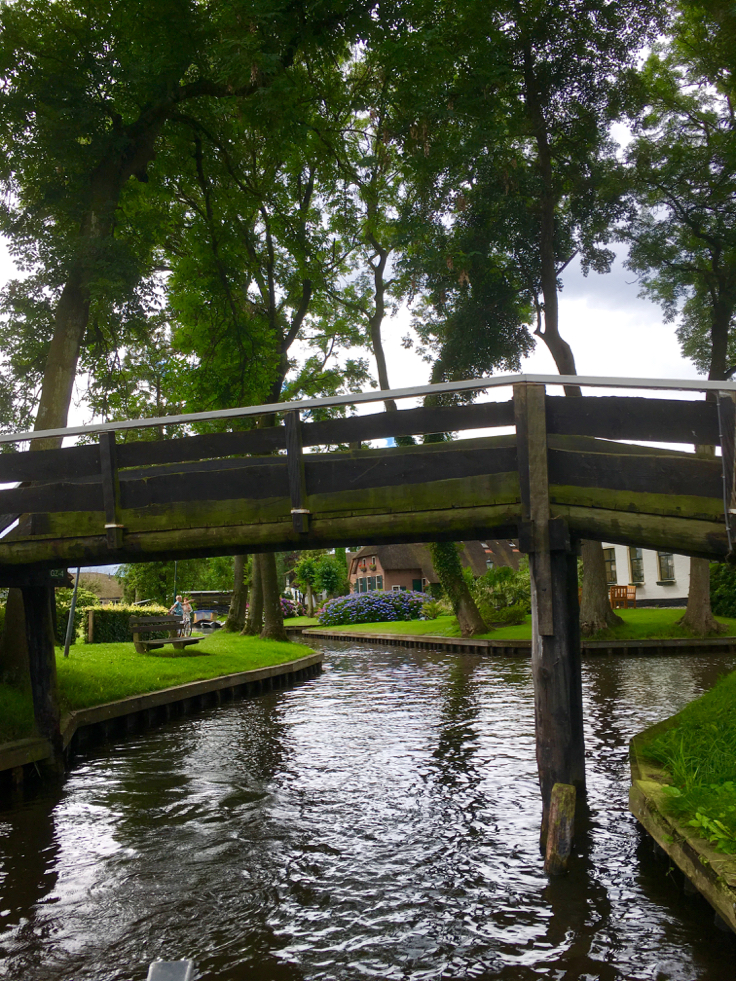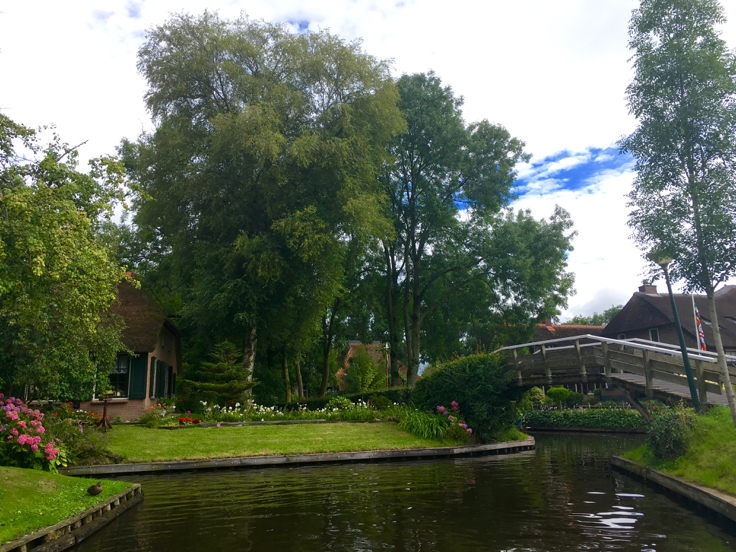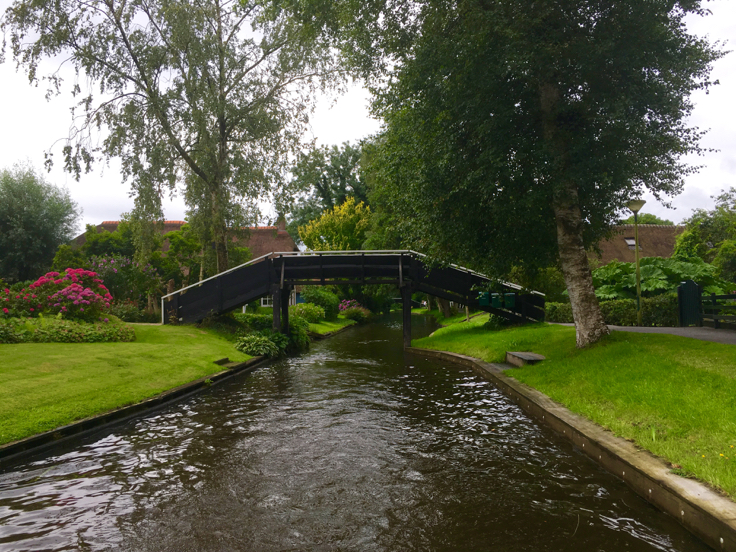Taking “inburgering” (Dutch cultural integration) to another level, I decided to take my family to a day out in Giethoorn. Apparently, according to Buzzfeed, Giethoorn is one of the most charming places in the world to see before you die. What is it about this obscure Dutch village of only 2,620 inhabitants that has garnered so much international attention? Why is it that around 200,000 Chinese tourists flock to this unassuming, quaint town every year?
And what better way to see and experience Giethoorn than taking a two hour private boat tour with Smit Giethoorn. Plus, I hoped to get some insider information, pseudo journalism style. Our guide Jordy was more than happy to oblige.
So here are some reasons as to why I think Giethoorn is to be considered a place where you can live out your fairytale dreams:
A Village with No Roads
Who wouldn’t want to see a village that essentially has no roads and cars? Rather, the only way to access the village is by the preferred traditional method of boats, or by bicycle. And thanks to “whisper boats” (boats with a noiseless electric engine) reigning supreme on the canals, the peace and tranquility of the Dutch countryside of Giethoorn is maintained.
Traditional Thatched-roof Homes with Perfectly Manicured Gardens
When you have a cluster of traditional thatched-roof homes with perfectly manicured gardens on their own separate islands only reachable by boats and bridges with bike paths, it’s easy to create a once in a lifetime, breathtaking experience. And what can never be replicated, not even by Disney, are the authentic 18th and 19th century Dutch farm houses filled with local families whose roots go way back. Giethoorn is not a museum or an amusement park. it is a thriving,close-knit community which takes pride in preserving its village and sharing it with the rest of the world.
A Nod to Dutch Tradition
Giethoorn was first established around 1230 by a group of fugitives from the Mediterranean. The village evolved when locals discovered a prized treasure: peat, a precursor to coal that can be used as an energy source when dried. The canals and surrounding lakes were actually formed inadvertently as the locals extracted the peat. Hence the canals are only about one meter deep and the surrounding lakes and waterways are not that much deeper. Giethoorn exemplifies the Dutch saying “God made the Earth, but the Dutch made Holland”.
Good Old Fashion Gezelligheid
One can’t really escape describing anything Dutch without referring to gezelligheid, an untranslatable Dutch word that embodies the feelings of wellbeing, coziness, love, belonging, and warmth. Floating through the bucolic village on a boat with your nearest and dearest can make anyone a sentimental fool.
Nostalgia
Giethoorn and the surrounding lake area also brings lots of nostalgia. The well-preserved homes, canals and bridges really do transport you to another time. It’s also a place where generations of Dutch children and teens spend the summer at nearby sailing camps making memories with thirty or so of their newly acquainted BFFs (sailing classmates). And naturally, it’s also the setting of wistful recollections of puppy love, random hookups and romantic happily ever afters.
Enjoying the Chinese Tourists
The Chinese love Giethoorn so much that they are probably the reason why Giethoorn made it to the most recent international edition of Monopoly, alongside glamorous heavyweights Amsterdam, London, Tokyo, Madrid and Lisbon. Their enthusiasm for Giethoorn paparazzi style is infectious. They’ve traveled thousands of miles and across several time zones just to see this unassuming Dutch village (as part of their Euro tour package of course). If that isn’t heartwarming, I don’t know what is. (Brilliant business idea to throw out there: wouldn’t it be amazing if a dim sum restaurant opened up in Giethoorn catering to the enthusiastic tourists?)
Genius Marketing
Dutch villages, towns and cities should take some notes with the brilliant marketing campaigns of Giethoorn. While Giethoorn is definitely unique in regards to having no roads, the country is littered with other villages brimming with picturesque canals, wooden bridges and traditional thatched-roof homes with perfectly manicured gardens. There are other breathtaking places in the Netherlands – the star fortified village of Naarden, for example – that remain off the beaten path or are virtually ignored by tourists.
Added bonus material we learned thanks to our Dutch guide Jordy:
Family Trees
Each house in the village traditionally has a white tree above their front door. The tree symbolizes the family. The size of the tree depends on the size of the family. The Smit family is by far the largest family in the village – their tree is so large that it needs to be against the wall of the house.
Goat Coat of Arms
The coat of arms of Giethoorn are two goat horns. Though there are no longer any goats around, it’s still a nod to how it was way back when. It is also the origin of the name of the village: Geytenhorn (goat horn) became Giethoorn.
Setting of Fanfare
An absolute must-watch Dutch comedy classic (1958) Fanfare by master filmaker Bert Haanstra takes places in old Giethoorn, way before the tourists.
And while you’re at it, come join our Facebook page for more Dutch gezelligheid. Guaranteed to distract you at work and help you procrastinate.

